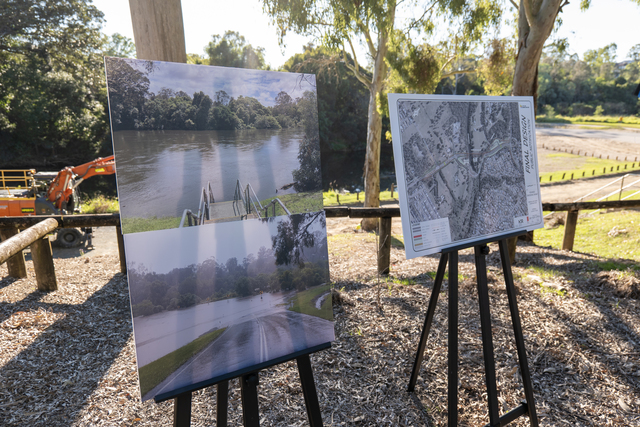The Good Oil by Rod Brown*
In previous editions, I have touched on Australia’s ‘industrial affliction’ – principally our fragmented industrial structure, small domestic market, and weak supply chains into the world economy. Much of the problem stems from the large distances between population centres, and an industrial structure that is biased towards the low tech end of the spectrum.
This is a legacy of past protection policies, our strong resource and agricultural base, and the natural tendency for foreign multinationals operating in Australia to look to their tried and true overseas suppliers for plant and equipment. As a result, Australia’s capital equipment is now virtually in mothballs.
Associated with this is lack of independence of local branches of multinationals in being able to put down firm roots. For example, Professor Jane Marceau from the University of Western Sydney was told several times during the course of her 1997 study of the biomedical industry that any R&D ideas would be passed back to headquarters overseas and carried out there.
This leads to links between firms and education and training institutions in Australia being shallow and infrequent, and creates gaps in the innovation circuits on which internationally competitive firms depend.
However, 32 consecutive quarters of economic growth have lulled us into a false sense of security – it has papered over the cracks that are opening up in our industrial structure. Should a significant recession occur, our industries will lack the dynamism and resilience to compete.
The realities are that Australian companies are not embracing R&D to the same extent as those in most other OECD economies, the trade gap in IT related goods and services is widening, and there is insufficient growth in the exports of value added minerals, metals, forest products and so forth to offset our imports of capital goods and services.
Economic theory dictates that the weakness of the $A should be feeding an export boom, and improving our trade and balance of payments situation. However, the reality is that international supply chains are now determining the winners and losers.
Supply chains involve contractual relationships, unwritten understandings and alliances built on trust and confidence. This means that being the lowest cost producer will not necessarily deliver sustainable export growth.
Macroeconomic solutions to industry policy
The reason why these issues are not understood or addressed at the national level is because of the sway held by Treasury on economic policy. The fact of the matter is that Treasury officials are mostly trained in macroeconomics and have only a superficial knowledge of industry or small business issues.
The Commonwealth Treasury has also had little opposition from other portfolios. Part of the reason lies in the buoyant economy – it has provided the Treasurer with the cover to claim success on behalf of Treasury thinking.
However there is a more deeply seated reason. It is a trend that has been underway in the Canberra bureaucracy for more 10-15 years. It starts with advice given to bright, aspiring bureaucrats that they need a solid grounding in the troika – Treasury, Finance or the Prime Minister’s Department – to make it to the top. The result is that these Departments attract many of the best graduates, who then spend around a decade moving within the troika.
They then spin out to the other Departments, where they spread their thinking and influence, and act as gatekeepers of the orthodoxy. Virtually all Departmental Heads come via a solid grounding in the troika.
Treasury Thumbprints
The result is Treasury thumbprints across most initiatives – the Innovation package has the expenditure pushed into the latter years of the program, the new 175% R&D tax incentive is so convoluted that only foolhardy or large companies will make use of it (a government official’s view – not mine), and the GST farce is plain for all to see.
The rise of Treasury’s influence also meant the end of Departments having a strong relationship with their clients – in the past, Austrade would go in to bat for exporters, the Industry department would support the manufacturing cause, Agriculture would push the farmers’ cause, and Transport would land heavy punches on behalf of the motorists and farmers.
Departments would fight it out around the table at inter departmental committees (IDCs), or insult each other via hastily arranged telephone calls, and life long enemies would be made in the name of pushing the departmental line.
The IDCs and Cabinet were the places where the convergent views became one. Ganging up on the troika was a Canberra past time, and victories were celebrated in the various fiefdoms. These practices have mostly died out – the head kickers of the 60s to early 90s are now playing bowls or golf, or have drifted to the private sector to continue the cut and thrust.
What all this means is that Australia has a federal bureaucracy that runs smoothly and quietly, the civil servants are mostly civil to each other, and the overall system is probably one of the most efficient and ‘clean’ in the world.But the legacy is that the bureaucracy seems to have lost touch with the citizens.
While the Department Client relationship was overdone in some respects, it did provide Departments with a very good understanding of what was happening in the wider community, in industry and in the regions.
It is little wonder that Ministers, who should have been able to draw on the expertise of their Departments, are now becoming accident prone. More importantly, the needs of Australian industry – agriculture, manufacturing and even services – are not being properly addressed.
*Rod Brown’s Canberra based consultancy group, Australian Project Developments Pty Ltd, specialises in industry/regional development and government liaison. For further information telephone (02) 6231 7261 or email apd@orac.net.au







